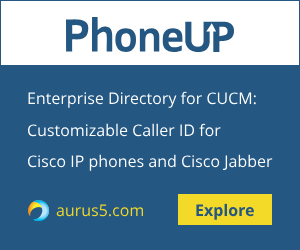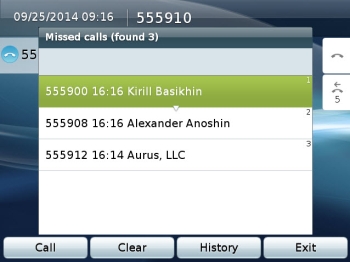 Hi, I’m Kirill Basikhin, international key account manager from Aurus. Here, at Aurus, we develop a bundle of applications for Cisco Unified Communications Manager. And, yes, we do use our products, because they help us work faster, smarter and easily.
Hi, I’m Kirill Basikhin, international key account manager from Aurus. Here, at Aurus, we develop a bundle of applications for Cisco Unified Communications Manager. And, yes, we do use our products, because they help us work faster, smarter and easily.
This post is not going to be a promotional one, I’ll just describe the way we setup the enterprise CUCM directory with our product. Each paragraph below is a real-life daily use-case.
The important feature used in all cases below is that our phone directory is integrated with CRM, so every contact I create in CRM automatically appears in the enterprise CUCM directory with phone numbers, manager (me or one of my colleagues) name, city, products purchased (or interested in).
Incoming Calls from my Clients Get Routed Directly to Me
We’ve got UCCX installed that receives any incoming call. A simple UCCX script sends the caller’s phone number to the CUCM directory software (PhoneUP Directory). The phone directory searches its database for the client number provided and sends the response to UCCX containing the phone number of manager (me), responsible for this client. UCCX then just forwards the call to me.
So, every time my client calls Aurus he reaches me automatically. Cool? Yep!
What if the Caller is Unknown?
If UCCX does not receive the phone number to transfer the call to, it routes it to the reception (actually one of the marketing managers, we’re not a huge company). The girl receiving the incoming call gets a CAD (yeh, we still use the old-school Cisco Agent Desktop) popup with the list of employees to whom calls from the calling party were transferred most often (PhoneUP Operator).
So when my aunt from Germany calls Aurus again (she doesn’t call my mobile, its expensive) the girl receiving the call gets a list with my name only (cause my aunt called previously and asked for me). Then she just clicks my name to forward the call.
How do I Handle Calls from my Clients
When the call reaches me, my Cisco IP phone shows the client name, the city and the product(s) purchased (remember, the CUCM phone directory is synchronized with our CRM).
So I can greet the client, saying “Hi John, Kirill speaking. I can’t believe you finally tested PhoneUP!”.
After all I’m a sales man and every smile on my client’s face will finally turn to another penny in my pocket.
How do I Call my Client
Our Cisco UCM phone directory provides the search interface on Cisco IP phone, but typing the client name using the IP phone keypad makes me wanna die (though several my clients do use it!). I usually make calls in 2 ways:
- when I work with client card in CRM, I just click the client’s phone number to call him; this is the simple click2call feature but what is REALLY useful is that our click2call supports DTMF – even if the phone number is stored unformatted (like “+1 (408) 526-7209 ext.. 4576”) the CUCM directory software calls the PSTN number, waits for the answer and then dials the DTMF;
- when I just want to call some person, I push “Ctrl-Q” to activate the “PhoneUP Agent” and use it to search the contact and make a call, the DTMF also works.
My colleagues use Cisco Jabber and its phonebook is also integrated with CRM, but I’m old and I use the old-fashioned IM client.
How do I Lunch

When I’m quitting for the lunch, I just lock my PC. What happens then is that my Cisco IP phone automatically locks its keypad (PhoneUP Lock feature) and activates the “Forward All” mode.
So, all calls from my clients are forwarded to my mobile.
When back to my workplace I unlock my PC and my Cisco IP phone goes to the normal mode.
How do I Manage Missed Calls

At the end of working day I do not setup the Forward All, cause most of my clients do not bother themselves about the time shift.
When I’m back to the office the next day, my Cisco IP phone shows the list of missed calls (XML-service provided by PhoneUP Directory).
What is important, this list contains names of clients called. So I know who called me and I can check the CRM before calling back.
